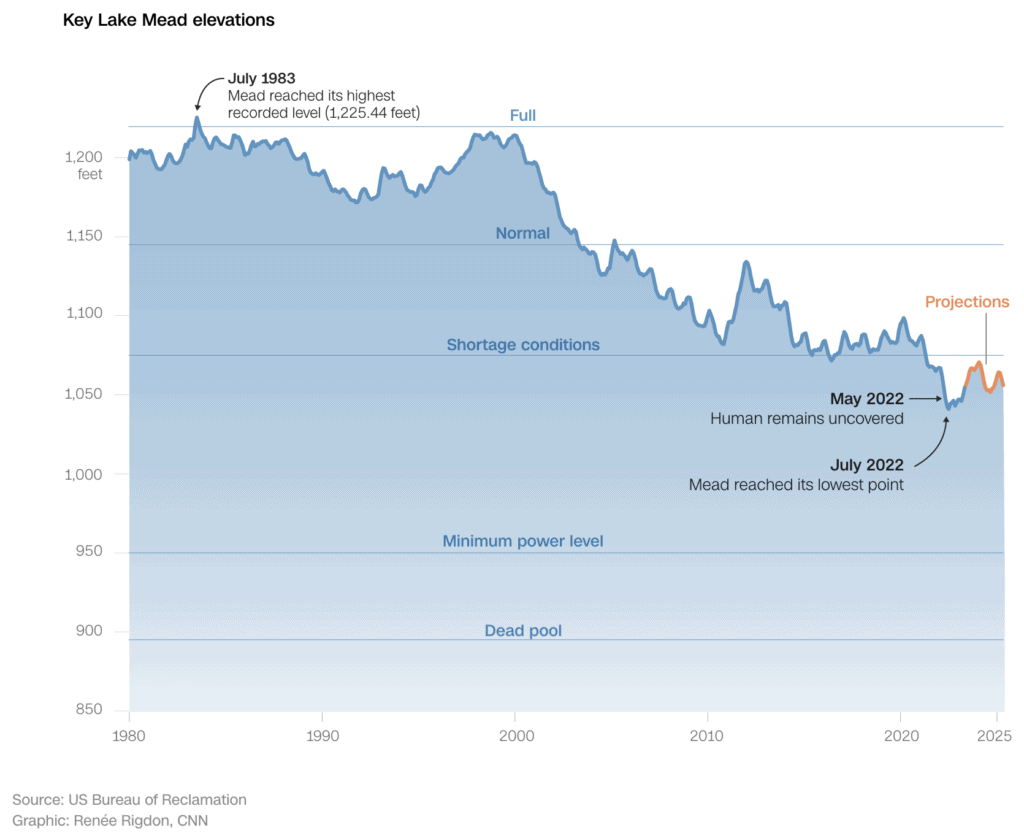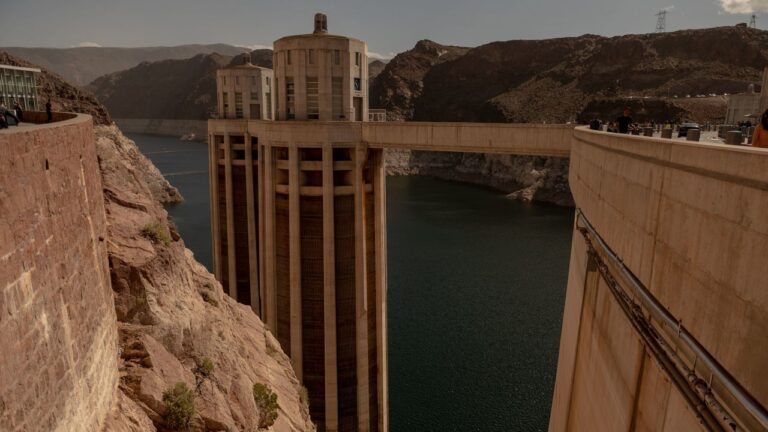Photo: Intake towers for the Hoover Dam rise above the surface of Lake Mead in April 2023. Will Lanzoni/CNN
Lake Mead, the nation’s largest reservoir, spent much of last spring and summer in free fall.
Over the course of four months, Mead’s elevation plummeted an astonishing 20 feet, first exposing one of the lake’s huge intake valves in April before revealing more sinister things – multiple sets of human remains, including one police said was the result of a decades-old homicide.
But as news reports focused on the remains, Western state officials and Colorado River experts were watching the falling water level with fear about what it could mean for the 40 million people who rely on the river for drinking water, electricity and crop irrigation.
Lake Mead fell to its lowest level to-date in July 2022, when the elevation sat at 1040 feet. If the reservoir had fallen another 145 feet, it would have become a “dead pool,” unable to provide water or hydroelectric power to millions of customers.
“People were really looking at the real possibility of dead pool,” Sarah Porter, director of the Kyl Center for Water Policy at Arizona State University, told CNN. “That is incredible to think about – no water coming off either of the two reservoirs,” she said, referring to Lake Mead’s upstream neighbor, Lake Powell.

Lake Mead began to drop precipitously in the early 2000s. By June 2021, the reservoir’s elevation was below 1,070 feet and some states were allocated less water from the Colorado River. This year’s interstate agreement will help curb the trajectory toward the minimum level for power generation, and “dead pool,” where Hoover Dam will no longer release water downstream.
One year later, Mead’s elevation is inching back up. A combination of historic winter snowpack and new federal agreements to pay cities, farmers and tribes to conserve water are expected to raise Mead to a high point of 1,070 feet in February 2024, according to the most recent federal data. That elevation will likely change as more conservation agreements are signed.
Paying people to save precious water was an essential component to the recent deal struck between lower basin states Arizona, California, and Nevada to collectively conserve 3 million acre-feet over the next three years, experts say.
But as maps and charts show, the extra water will be a drop in the bucket for a reservoir that has dramatically declined in the past two decades.
Mead’s projected high elevation of […]
Full article: www.cnn.com

